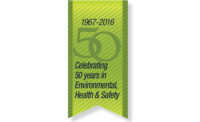Since 1967 when ISHN launched, these are historic dates…
November 20, 1968
FARMINGTON MINE DISASTER in West Virginia traps 99 miners; 21 are able to escape but 78 perish. The bodies of 19 men are never recovered. In a lawsuit filed 48 years after the tragedy – and based on newly revealed evidence the widows and children of the victims charge that Consolidation Coal employees disabled an alarm that could have alerted the miners to evacuate before the first deadly explosion occurred.
December 29, 1970
President Nixon signs into law the OCCUPATIONAL SAFETY AND HEALTH ACT, which Congress passed “to assure so far as possible every working man and woman in the Nation safe and healthful working conditions and to preserve our human resources.” In the two years prior to the OSH Act, there were 14,000 worker deaths a year, largely attributable to the rise in industrial production and the introduction of thousands of new chemical compounds.
December 30, 1970
HURRICANE CREEK MINE DISASTER in Kentucky results in the deaths of 38 men and comes one year to the day after passage of the Coal Mine Safety and Health Act.
April 28, 1971
OSHA officially opens its doors. The federal agency – currently headed up by Assistant Secretary of Labor Dr. David Michaels – is charged with setting and enforcing standards and regulations and providing training, outreach and assistance in order to assure safe and healthy working conditions in the U.S.
October 11, 1976
Congress passes the TOXIC SUBSTANCE CONTROL Act which was intended to regulate the safe use of chemicals affecting human health and environmental welfare – although it came under criticism for decades for its failure to effectively fulfill its mission. It was finally amended on June 22, 2016, by the passage of the Frank R. Lautenberg Chemical Safety for the 21st Century Act, which includes deadlines for evaluating chemicals; a new risk-based safety standard; increased public transparency for chemical information; and adequate funding for the EPA to carry out its responsibilities under the law.
May 23, 1978
U.S. Supreme Court rules in BARLOW V. MARSHALL that employers can insist on a warrant before OSHA inspectors are permitted on-site.
April 27, 1978
WILLOW ISLAND DISASTER – The worst construction accident in U.S. history occurred when falling concrete caused scaffolding to collapse, killing 51 construction workers who were building a cooling tower in West Virginia. Many of the men who fell to their deaths were only able to be identified by the contents of their pockets. OSHA determined that the scaffolding was attached to concrete that had not had time to cure sufficiently. The contractors were cited for 20 violations and the case was settled for $85,500, or about $1,700 per worker killed.
March 28, 1979
The THREE MILE ISLAND nuclear power plant in Pennsylvania experiences a partial meltdown, the most serious accident in U.S. commercial nuclear power plant history, and results in the near-total devastation of the U.S. nuclear power industry. Large amounts of coolant escaped into the atmosphere during the incident, which was caused by mechanical breakdowns but exacerbated by the failure of plant operators to correctly diagnose and respond to the problem. Public concern, anti-nuclear activists and a slew of new regulations succeeded in halting the growth of the industry.
February 26, 1980
Supreme Court rules in WHIRLPOOL V. MARSHALL that workers have the right to refuse to perform tasks on a reasonable apprehension of death or serious injury, and the belief no less drastic alternative is available. The ruling stemmed from a suit brought by two Whirlpool employees who were disciplined after refusing to perform maintenance duties on a wire mesh screen suspended in a manufacturing facility because they felt it was unsafe. (The screen was used to protect employees below it from objects that occasionally fell from an overhead conveyer.)
July 2, 1982
OSHA creates theVOLUNTARY PROTECTION PROGRAM, an initiative that encourages companies and federal agencies to prevent workplace injuries and illnesses through hazard prevention and control, worksite analysis, training, and cooperation between management and workers. Participants can earn certifications: Star (for employers who achieve below-average injury and illness rates for their industries) and Merit (for employers who have implemented good safety and health programs but require additional improvements).
November 25, 1983
OSHA issues the landmark HAZARD COMMUNICATION STANDARD.
Dec. 3, 1984
A gas leak from a Union Carbide plant in BHOPAL, India killed approximately 5,200 people and caused several thousand others to suffer permanent or partial disabilities. Indian authorities blamed the disaster on poor management and insufficient maintenance, but Union Carbine Corporation maintains that someone introduced a large volume of water into a tank containing methylisocyanate, causing a chemical reaction that forced the pressure release valve to open and allow the gas to leak. The factory closed in 1986.
January 28, 1986
The U.S. space shuttle CHALLENGER exploded less than two minutes after liftoff, killing all seven astronauts aboard. An investigation determined that two rubber O-rings, which were supposed to separate sections of the rocket booster, had failed due to cold temperatures at the time of the launch. The tragedy prompted NASA to temporarily suspend all shuttle missions.
April 26, 1986
An accident and fire at a nuclear power plant in CHERNOBYL, Ukraine (in the former Soviet Union) released massive amounts of radioactive material into the environment and killed 28 of the site’s 600 workers in the first four months after the event. (Another 106 workers received high enough doses to cause acute radiation sickness.) Officials closed off an 18-mile area around the plant and evacuated hundreds of thousands of people from the most contaminated areas.
October 17, 1986
The EMERGENCY PLANNING AND COMMUNITY RIGHT-TO-KNOW ACT is created. Employers must report on the storage, use and releases of hazardous substances to federal, state, and local governments. EPCRA requires state and local governments and Indian tribes to use this information to prepare their communities for potential risks.
October 22, 1986
The ASBESTOS HAZARD EMERGENCY RESPONSE ACT is enacted under the Toxic Substances Control Act, kicking off a wave of panicky and sloppy asbestos removal jobs by non-professionals.
March 24, 1989
The tanker EXXON VALDEZ struck a reef in Alaska’s Prince William Sound, rupturing its hull and spilling nearly 11 million gallons of crude oil into the environment. More than 1,000 miles of coastline were fouled and hundreds of thousands of animals died. Exxon ended up paying billions in cleanup costs and fines. The ship’s captain, Joseph Hazelwood, was acquitted of being intoxicated while at the helm, but convicted on a misdemeanor charge of negligent discharge of oil and fined $50,000. Many Alaskan beaches remain polluted with crude oil.
October 23, 1989
At a PHILLIPS 66 plant near Pasadena, Texas, an explosion measuring 3.5 on the Richter scale killed 23 workers, injured hundreds of others and destroyed much of the plant. Largely blamed on procedural errors, the blast hastened the adoption of OSHA’s process safety management standard, which had been announced, but had not yet been formally enacted.
September 3, 1991
IMPERIAL FOODS fire in Hamlet, North Carolina, kills 25 workers. The fire was caused by a faulty modification in a fire line. In its 11 years of operation, the facility had never received a safety inspection.
July 10, 1992
The Eleventh Circuit Court of Appeals throws out hundreds of updated permissible exposure limits (PELS) for toxic substances, saying OSHA didn't do sufficient research. To this day no one in Washington has been able to come up with a substitute plan. The only consensus: substance by substance PEL rulemaking is a waste of time.
April 19, 1995
OKLAHOMA CITY BOMBING of the Alfred P. Murrah Federal Building in Oklahoma City leaves 168 people dead and hundreds injured.
June 8, 1995
NIOSH is given exclusive authority for testing and certification of respirators with the exception of certain mine emergency devices, which will continue to be jointly certified by NIOSH and MSHA.
April 20, 1999
COLUMBINE HIGH SCHOOL (Colorado) shootings kill 13 people and wound more than 20.
November 14, 2000
OSHA issues its long-awaited and hotly contested ERGONOMICS STANDARD.
March 19, 2001
CONGRESS VOTES TO THROW OUT OSHA’S RULES ON ERGONOMICS, issued in the waning months of the Clinton administration.
February 1, 2003
Space shuttle COLUMBIA disintegrates over Texas and Louisiana, killing all seven crew members. An investigation found that a large piece of foam fell from the shuttle's external tank and fatally breached the spacecraft wing. When it became known that NASA had been aware of the foam problem for years, the space agency came under intense criticism.
May 25, 2005
A series of explosions at a BP REFINERY in Texas City, Texas kills 15 workers and injures 180 others. OSHA issues its largest-ever fine. Many of the victims were in or around work trailers located near an atmospheric vent stack; the explosions occurred when a distillation tower flooded with hydrocarbons and was overpressurized, causing a geyser-like release from the vent stack.
February 7, 2008
Combustible dust explosion at the IMPERIAL SUGAR REFINERY in Georgia kills 14 workers and injures 30.
April 5, 2010
UPPER BIG BRANCH MINE DISASTER in West Virginia, caused by a coal dust explosion, kills 29 miners, the worst mining accident in the U.S. since 1970. MSHA issued 369 citations and the CEO of Massey Energy at the time of the disaster, Don Blankenship, is convicted in 2015 of conspiring to willfully violate safety standards. He is found not guilty of charges of securities fraud and making false statements.
April 20, 2010
DEEPWATER HORIZON explosion and oil spill kills 11 workers and results in a massive Gulf of Mexico oil spill.
April 24, 2013
RANA PLAZA disaster in Bangladesh results in a death toll of 1,129 with approximately 2,500 injured. Supply chains and contractors and subcontractors of multinational corporations come under intense scrutiny.
May 4, 2015
OSHA issue its final rule on CONFINED SPACE ENTRY IN CONSTRUCTION sites. Previously the only requirement for confined spaces in construction was training. The new rule requires employers to determine what kinds of spaces their workers are in, what hazards could be there, how those hazards should be made safe, what training workers should receive, and how to rescue those workers if anything goes wrong.
March 24, 2016
OSHA issues its final rule on RESPIRABLE CRYSTALLINE SILICA exposures. The standard has attracted a slew of lawsuits from construction and manufacturing groups who argue the new rule will be too costly — and technologically impossible — to implement.
May 11, 2016
OSHA issues its final rule on ELECTRONIC RECORDKEEPING and announces it will publicly post injury records of employers to “nudge” employers to step up their safety and health efforts. Starting in 2017, many employers will be required to electronically submit the summary of injuries and illnesses to OSHA.


